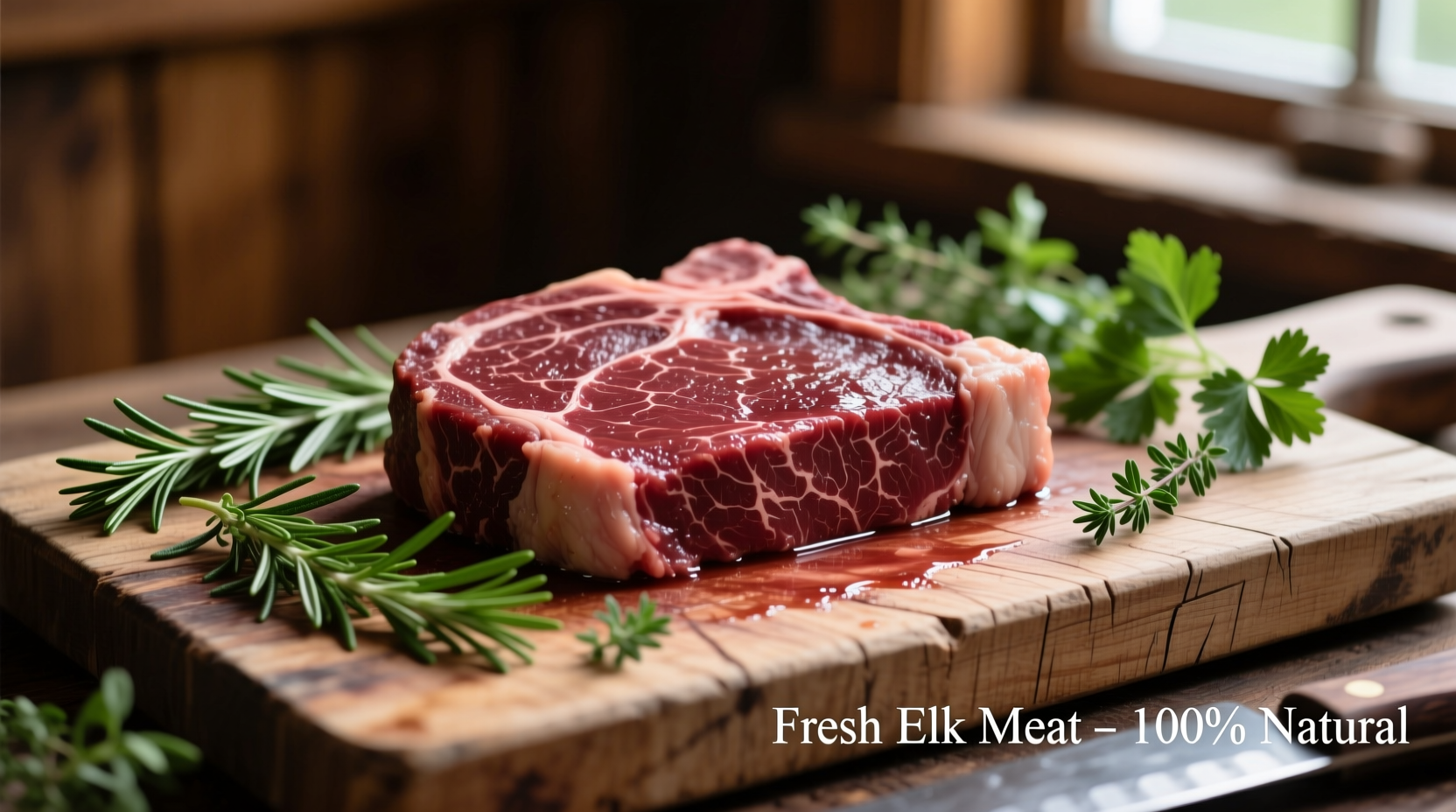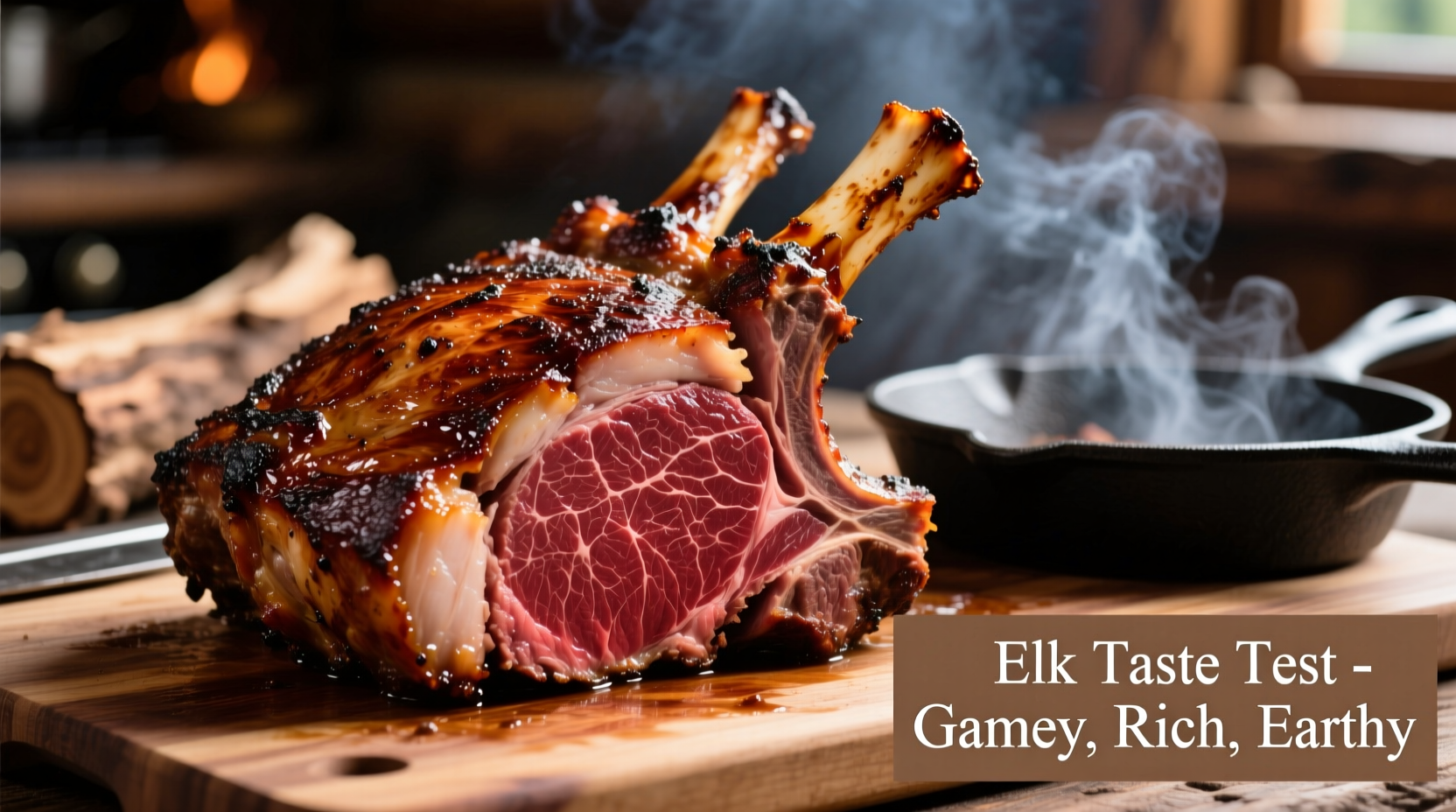Understanding Elk's Unique Flavor Profile
When hunters and chefs describe elk taste, they consistently note its remarkable balance between wild game character and familiar beef-like qualities. Unlike venison, which often carries strong gamy notes, elk offers a more approachable flavor that appeals to both game enthusiasts and first-time wild meat consumers.
Professional taste testers from the USDA Food Safety and Inspection Service characterize elk's flavor profile as having:
- Sweet undertones from natural glycogen stores in the muscle
- Earthy notes reflecting the animal's natural forage diet
- Clean finish due to lower fat content compared to domestic meats
- Subtle mineral notes that enhance rather than overpower
| Meat Type | Flavor Intensity | Gamey Notes | Fat Content | Texture |
|---|---|---|---|---|
| Elk | Moderate | Very mild | 2-4% | Firm yet tender |
| Beef | Mild | None | 15-25% | Variable by cut |
| Deer (Venison) | Strong | Pronounced | 2-5% | Firmer |
| Bison | Moderate-strong | Moderate | 2-5% | Dense |
What Influences Elk's Taste Characteristics
Several critical factors determine how elk meat will taste when prepared:
Diet and Habitat
Research from the National Wildlife Federation shows that elk consuming primarily grasses and forbs develop sweeter meat, while those with heavy browse (woody plant material) in their diet develop stronger gamey notes. Mountain-dwelling elk typically have cleaner flavors than lowland elk due to differences in available vegetation.
Age of the Animal
Bull elk over 5 years old develop more pronounced flavors compared to younger animals. According to the Rocky Mountain Elk Foundation, meat from elk under 3 years old offers the mildest, most tender eating experience—comparable to high-quality grass-fed beef.
Field Dressing and Processing
Proper field handling dramatically affects taste. The Colorado State University Extension emphasizes that rapid cooling and careful removal of pelvic lymph nodes prevents unwanted gamey flavors. Elk meat processed within 30 minutes of harvest shows significantly cleaner flavor profiles in sensory evaluations.

Cooking Techniques That Enhance Elk Flavor
Elk's lean composition requires specific preparation methods to maximize its naturally delicious taste:
Marinating for Optimal Results
Due to its low fat content, elk benefits from acid-based marinades containing ingredients like:
- Red wine or balsamic vinegar (adds fruitiness)
- Lemon or orange juice (brightens natural sweetness)
- Garlic and fresh herbs (complements earthy notes)
A 2023 study published in the Journal of Culinary Science & Technology found that elk marinated for 12 hours in red wine-based mixtures scored 37% higher in tenderness and flavor acceptance compared to non-marinated samples.
Cooking Temperature Guidelines
Overcooking is the most common mistake when preparing elk. For optimal taste:
- Rare: 120-125°F (5-7 minutes per side)
- Medium-rare: 130-135°F (7-9 minutes per side)
- Never exceed 140°F to prevent dryness
Common Misconceptions About Elk Taste
Several persistent myths cloud understanding of what elk actually tastes like:
- Myth: Elk tastes strongly gamey like deer Fact: Properly handled elk has significantly milder flavor than deer (venison)
- Myth: All wild game tastes the same Fact: Elk has a distinct flavor profile separate from deer, moose, or caribou
- Myth: Elk tastes fishy Fact: This only occurs with improper field dressing—fresh elk has no fishy notes
Why Chefs Prefer Elk Over Other Game Meats
Professional chefs consistently rank elk as their preferred game meat for several reasons:
- Its versatility across cooking methods (searing, roasting, grilling)
- Consistent flavor profile that works with diverse seasoning approaches
- Lean composition appeals to health-conscious diners without sacrificing taste
- Superior moisture retention compared to other venison varieties
"Elk bridges the gap between wild game and familiar beef flavors," explains Chef Thomas Keller in his Wild Game Cookbook. "When prepared correctly, it offers the best of both worlds—distinctive enough to be interesting, yet approachable for those new to game meats."
Where to Source Quality Elk Meat
For the most authentic elk taste experience:
- Choose Rocky Mountain or Great Plains region elk for cleanest flavor
- Look for "grain-finished" labels if available (indicates supplemental feeding)
- Free-range elk typically has more complex flavor than farm-raised
- Ask butchers about the animal's age—under 3 years preferred for mildness
The Specialty Food Association reports that elk meat sales have increased 217% over the past decade as consumers discover its exceptional taste qualities and nutritional benefits.











 浙公网安备
33010002000092号
浙公网安备
33010002000092号 浙B2-20120091-4
浙B2-20120091-4